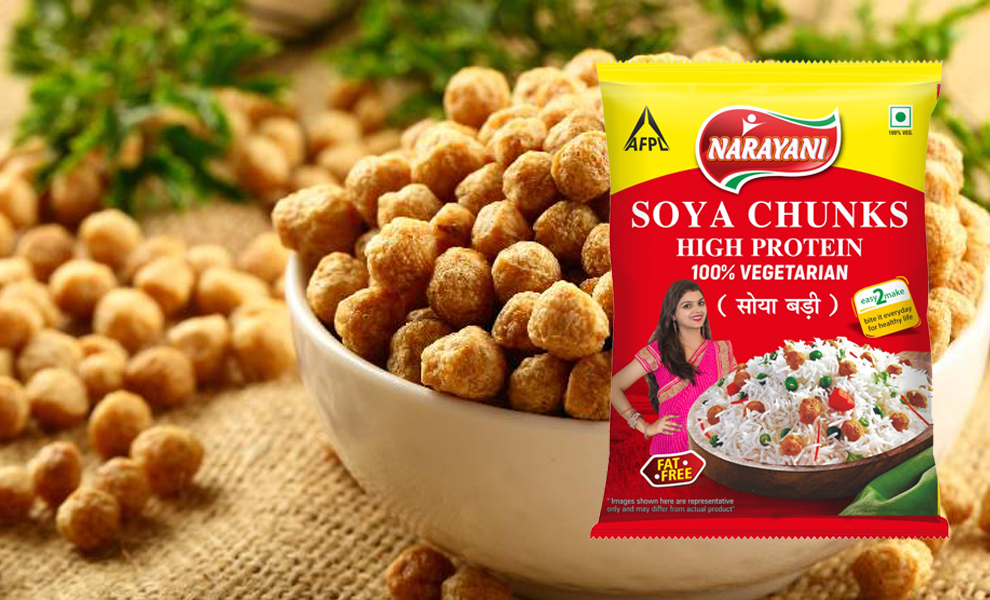
Discover Narayani Soya Chunks: Premium Quality Protein Source
Certainly! Here's a comprehensive and detailed description of the process of the making Soya Chunks in a factory, from start to packing:
1. Raw Material Selection and Cleaning: The process begins with the careful selection of premium soybeans, known for their nutritional richness. These soybeans undergo meticulous cleaning to remove any impurities, ensuring they meet the stringent quality standards upheld by Narayani Spices.
2. Soaking: Cleaned soybeans are then soaked in water to soften them. This soaking process helps in hydrating the beans, making them easier to process and improving their texture after extrusion.
3. Extrusion: Once adequately soaked, the soybeans are fed into an extruder machine. The extruder applies heat and pressure to the soybeans, which transforms them into a dough-like consistency. This dough is then pushed through a die that shapes it into the desired chunk-like form. Extrusion helps in structuring the soya chunks and enhances their digestibility.
4. Cooking: The formed soya chunks are transferred to a cooking chamber where they are cooked under controlled conditions. Cooking helps in further improving the texture and taste of the chunks, ensuring they are tender and flavorful. The temperature and cooking time are carefully monitored to achieve consistent results batch after batch.
5. Drying: After cooking, the soya chunks undergo a drying process. This step is crucial for reducing the moisture content to a level that ensures stability and extended shelf life. Drying may be done through hot air drying or other methods suitable for preserving the nutritional content and texture of the chunks.
6. Quality Control and Assurance: Throughout the entire production process, stringent quality control measures are implemented. Quality checks are performed at various stages, including raw material inspection, extrusion, cooking, and drying. These checks ensure that the soya chunks meet food safety standards, nutritional specifications, and customer expectations.
7. Packaging: Once the soya chunks have passed quality control inspections, they are ready for packaging. Modern packaging equipment is used to weigh and pack the chunks into suitable packaging materials, such as pouches or bags. Packaging is done in a hygienic environment to maintain the freshness and integrity of the product.
8. Storage and Distribution: Packaged Soya Chunks are stored in controlled environments to preserve their quality and nutritional value. They are labeled with necessary information such as manufacturing date, expiry date, and nutritional content. The packaged products are then distributed to retail stores, wholesalers, or directly to customers based on market demand.
9. Final Product: The final product is high-quality soya chunks that are nutritious, versatile, and convenient for various culinary uses. Soya chunks are known for their high protein content and are popular among vegetarians, health-conscious individuals, and those looking for meat alternatives.
Overall, the process of making Soya Chunks in a factory involves meticulous attention to detail, adherence to strict quality standards, and the use of advanced technology to ensure consistent production of a nutritious and high-quality product.

